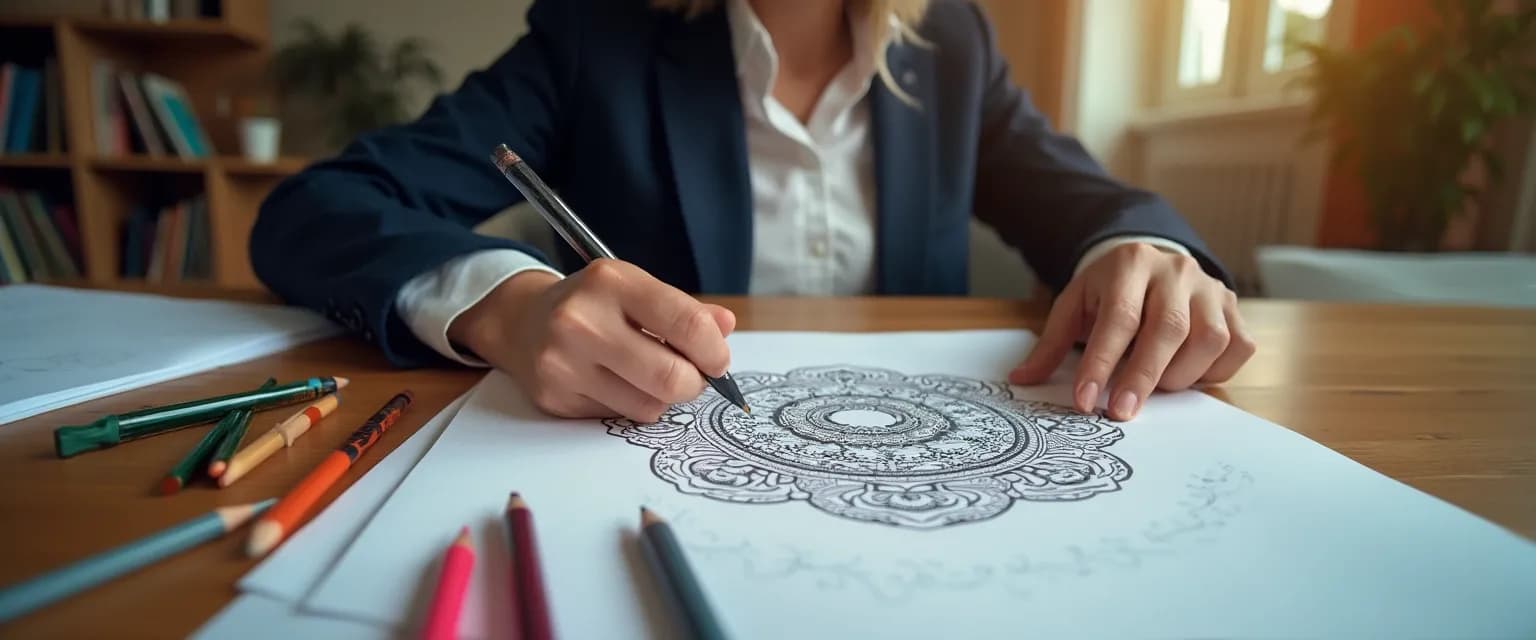Mindful Coloring: A Powerful Stress Management Tool for High-Pressure Jobs
Feeling overwhelmed at work? You're not alone. In today's high-pressure work environments, stress has become the unwelcome companion of success. While you might be familiar with traditional stress management techniques, mindful coloring offers a surprisingly effective alternative that fits perfectly into your busy schedule. This simple yet powerful practice combines the focus of mindfulness with the creative expression of coloring to create a mental reset button you can press anytime.
Mindful coloring isn't just about staying within the lines—it's a strategic tool that helps your brain shift gears between demanding tasks. When you engage in this focused activity, even for just 5-10 minutes, your brain gets a chance to recover from the constant barrage of decisions and pressure. It's particularly valuable for professionals in high-stakes environments where mental clarity can make or break your performance.
Recent neuroscience research supports what many professionals have discovered through experience: mindful coloring activates different neural pathways than your typical work tasks, allowing overused brain regions to rest while engaging your creative centers. This mental shift is precisely what makes it so effective for stress reduction techniques during your workday.
How Mindful Coloring Rewires Your Brain During Work Breaks
The science behind mindful coloring is fascinating. When you focus on coloring, your amygdala—the brain's alarm system—calms down, reducing the production of stress hormones like cortisol. Simultaneously, your prefrontal cortex—responsible for planning and decision-making—gets a much-needed break from the constant demands of your high-pressure job.
Color psychology plays a significant role in why mindful coloring works so effectively. Blues and greens promote calm, while warmer colors like yellow can boost energy and creativity. This isn't just theory—research published in the Art Therapy journal found that just 20 minutes of coloring reduced anxiety markers significantly more than other relaxation techniques.
What sets mindful coloring apart from scrolling through social media during breaks is intention. When you mindfully color, you're actively engaging in a focus-building activity rather than passively consuming content. This distinction is crucial for professionals seeking genuine mental restoration between challenging tasks.
The repetitive, structured nature of coloring activates the same parts of your brain associated with meditation, creating what neuroscientists call a "flow state." This focus improvement mechanism explains why many executives report feeling mentally refreshed after brief mindful coloring sessions, ready to tackle their next high-stakes challenge with renewed clarity.
Implementing Mindful Coloring in Your Professional Routine
Incorporating mindful coloring into your workday doesn't require elaborate preparations. Keep a small coloring book and colored pencils in your desk drawer—there are even pocket-sized options designed specifically for professionals. Digital alternatives work too, with numerous apps offering mindful coloring experiences for tablets.
For maximum benefit, try these mindful coloring tips:
- Set a timer for 5-10 minutes to create boundaries for your break
- Choose patterns that match your needs—intricate designs for deeper focus, simpler ones when you're already mentally drained
- Focus completely on the coloring process—notice the sensation of the pencil, the emerging colors, and your breathing
- Use this time as a transition between different work tasks rather than randomly throughout the day
The transition back to work after mindful coloring is where the magic happens. Many professionals report experiencing what psychologists call "incubation effects"—solutions to complex problems often emerge after this type of mental break. This makes mindful coloring not just a stress management tool but a productivity enhancement strategy.
Transform Your Workday with Strategic Mindful Coloring Practices
Finance executive Maria found that incorporating 10-minute mindful coloring sessions between client meetings improved her decision-making clarity and reduced end-of-day exhaustion. Similarly, surgeon Dr. James reports using mindful coloring during brief breaks to maintain steady hands and clear focus during lengthy procedures.
For enhanced results, pair mindful coloring with deep breathing or a quick stretch. This combination creates a powerful reset for your nervous system, helping you bounce back from stressful situations more effectively.
Ready to experience how mindful coloring can transform your workday? Start with just one 5-minute session tomorrow between your most challenging tasks. Notice how differently your mind approaches problems afterward. This simple mindful coloring practice might be the strategic edge you've been looking for in your high-pressure career.




